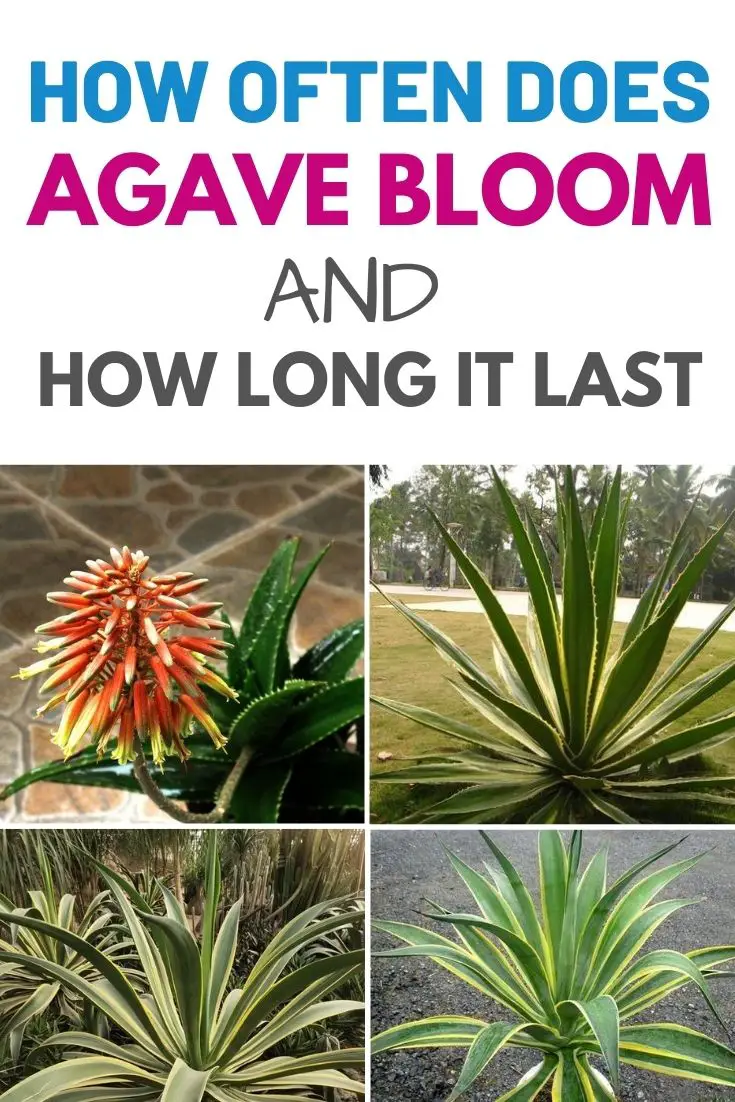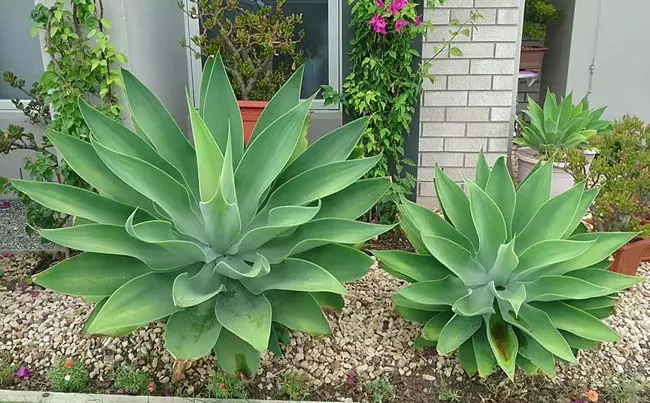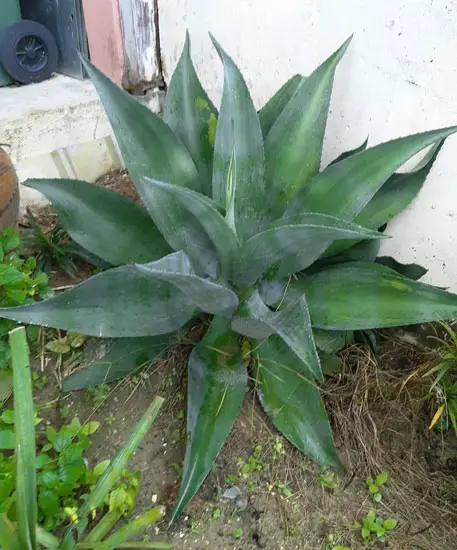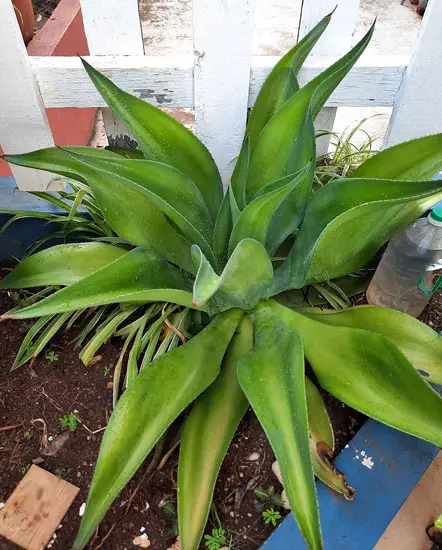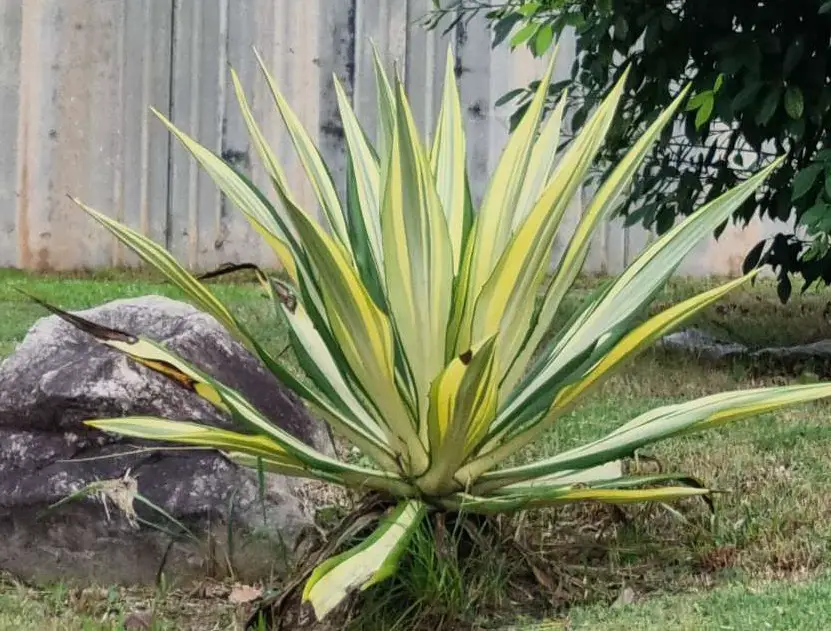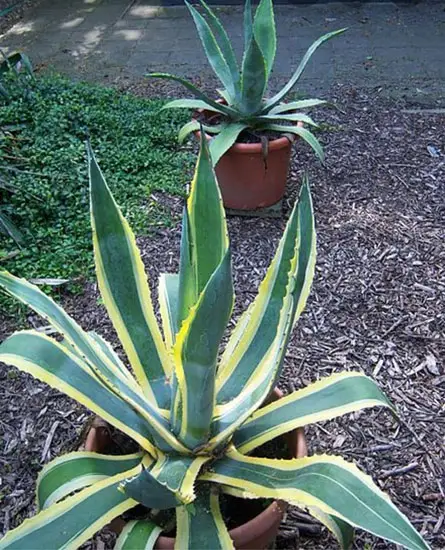It’s always a great sight to behold whenever plants are starting to bloom because they add a lot of color to the scenery. Most plants tend to flower quite often, as some of them usually do so every year when spring comes. But you can’t say the same about agave because this plant will take a very long time to flower. So, how often does agave bloom?
The blooming time of the agave plant depends on the variety. Agave americana may take decades to bloom depending on the climate, but some varieties of agave can take up to 6 to 8 years to bloom. However, generally, most varieties of the agave plant would need at least 10 years to flower.
Even though agave might be called the century plant, it actually is an overstatement because it doesn’t take a hundred years (assuming you get to live that long) for it to bloom. Nevertheless, it still takes a very long time to flower, especially when you compare agave to other plants. In that regard, let us get to know more about agave and how it blooms.
What Happens When An Agave Flowers?
The agave plant is useful for a lot of different purposes, whether for food or industrial purposes. However, agave is widely known for being a natural sweetener that people use to substitute sugar with and for tequila drinks.
But while agave might be famous as a plant often used for commercial purposes, it is also widely known for being a plant that can take a very long time to bloom. And that is why it has earned the nickname “century plant.”
Despite its nickname, you really don’t have to wait for a hundred years for agave to bloom, even though there was a case where one agave plant took 80 years to bloom. No one can wait a hundred or even 80 years for a plant to flower, assuming that someone could actually live that long to see an agave flowering.
The truth is that most agave plants will take more than a decade or maybe even a few decades to bloom, while some varieties may need only about 6 to 8 years, depending on the climate and how you took care of them.
What Happens When An Agave Plant Begins To Bloom?
When an agave plant is about to bloom, it will start to develop a spike-like stalk, where the flowers will eventually branch out. This is what is called the bloom stalk. The stalk would then continue to grow and grow from the mother agave plant until it can even become similar to the height of your usual light post or even taller than that.
From there, the bloom stalk will begin to grow branches that will produce leaves that will eventually cluster. In some cases, there are agave variants with flower stalks that will steadily turn green as some stalks start reddish at first. Meanwhile, the leaves will cluster with one another to form a bushy plant that contains flowers rich in a natural sweetener or nectar.
In case you are wondering where agave sweetener comes from, it comes from the nectar of the flowers of a blooming agave plant. That is why agave sweeteners can be quite expensive, considering it takes a long time for the agave plant to bloom.
It is also in the branches where the agave plant holds smaller plants or seeds that are actually the agave’s offspring, which are technically just clones of itself. And when the entire bloom stalk becomes big enough, and the main plant weakens as it draws its final breath, the entire towering structure will topple down. When that happens, the smaller plants or the offspring of the agave plant will begin to grow after the bloom stalk has already fallen to the ground.
How Long Does Agave Bloom Last?
There is no certainty as to how long an agave bloom can last as it really depends entirely on the main plant itself. However, what is clear here is that agave plants that have flower stalks that develop faster than most other agave plants will more likely bloom faster. That means that the time they are in bloom won’t probably be as long, depending on how long the mother plants themselves will last.
In most cases, however, an agave’s blooming period can last for up to three months from the time the spike-like bloom stalk starts growing until the agave bloom stalk is ready to topple down as the plant itself begins to lose its energy to support the towering structure.
Agave Bloom Time Lapse
Here is a neat time-lapse video of an agave blooming:
You can clearly see how fast the agave plant’s bloom stalk develops as it reached a massive height in only a span of two months.
After it has reached that height, the branch themselves began to grow rapidly out of the bloom stalk until they developed leaves of their own and flowers that contain the nectar of the agave plant as well as the bulbous plants and the seeds that are soon to become the next generation of the agave plant.
While not shown in the video, it might take about a month or so for the agave plant’s flowers to start losing their luster and for the entire bloom stalk to eventually topple down to release its clones or seeds into the earth.
Do Agaves Die After They Bloom?
As you might have already surmised at this point, the agave plant will die after it blooms. The reason for such is that it will actually use all of its energy to develop the bloom stalk and begin flowering. This also explains why the bloom stalk grows and develops at an extremely rapid pace. The entire mother agave plant puts all of its energy into developing the bloom stalk without leaving anything for itself.
Soon after the bloom stalk has already begun blooming, the plant will steadily begin to die because it no longer has any energy left for itself. When that happens, the entire stalk will topple down because the mother plant has already died and can no longer support the bloom stalk.
However, because the agave flowers contain the genetic code of the agave plant in the form of the clones or the seeds it developed when it bloomed, it will begin a new life in the plants that may end up growing out of those offspring. A single agave plant can form dozens of these clones to ensure the likelihood of it surviving in the form of offspring that could actually begin to sprout and survive.
Can You Stop An Agave From Flowering?
Technically, yes, you can stop an agave plant from flowering. Doing so is quite simple as all you need to do is cut the bloom stalk from the plant the moment it starts jutting out. But as to whether or not preventing the plant from flowering will stop it from dying shortly after that, the answer is a resounding no.
You cannot stop an agave plant from dying just by stopping the flowering process. That’s because, even though you may have cut the bloom stalk to prevent it from flowering, the mother plant will still undergo the same internal changes that will eventually cause it to die.
Remember here that the purpose of why the agave plant is blooming is for propagation. That means that it will bloom because it knows that it is at the end of its lifespan and about to die. And by blooming, it can produce offspring that will continue the lifecycle. As such, because the plant itself is already dying the moment it starts to develop the bloom stalk, you cannot extend its lifespan by simply cutting off the stalk.
How Long Does An Agave Plan Live?
An agave plant’s lifespan is the same as its flowering period because it will only live up to the point that it is blooming. But that really depends on the plant itself as some agave plants can live for up to 80 years while some will only live between 6 to 8 years depending on how well you took care of them.
Speaking of which, there is no certainty as to why an agave will bloom or when it will bloom. It will simply bloom when it wants to. However, it is widely believed that the agave plant will bloom faster when it is taken care of properly as proper care and nutrients will promote it to flower.
That’s why some agave variants will only bloom in less than a decade, especially when they are taken care of, while some may take decades to flower.
How Big Do Agave Plants Get?
The size of an agave plant largely depends on its age, as some of the older agave plants may reach more than 25 feet during the peak of their bloom. However, generally, agave plants that are only about 6 to 10 years old may be limited to about 10 feet at the maximum when they are at the peak of their bloom.
Agave americana blooming period
The Agave americana is the agave variant that is most often associated with the century plant nickname. However, it does not take a century to bloom as most Agave americana plants will take at least a decade to bloom but may even take 40 or so years for it to begin flowering. It is widely believed that not taking care of your Agave americana will cause it to live longer.
Agave attenuata blooming
The Agave attenuata is an unusual variant of agave because of how its bloom stalk actually curves to form a swan neck. That’s why it is often called the swan neck agave. Unlike other agave variants, the Agave attenuata may take only about 6 to 8 years to bloom, making it one of the fastest agave variants in its flowering period.
Agave bloom stalk
The agave bloom stalk is the towering structure that begins to grow out of the agave when it is ready to flower. Agave bloom stalks grow quite fast when the mother agave is ready to bloom after sensing that it has reached the end of its lifespan. When that happens, the mother agave will divert all of its stored energy to the development of the agave bloom stalk, thereby making its growth quite fast.
As soon as the agave bloom stalk has reached its peak height, which can be somewhere around 10 to 25 feet, it will begin to develop branches that will give birth to leaves and flowers that are yellowish in color. And when the mother agave has died after pouring its energy into the growth of the agave bloom stalk, the towering structure will eventually fall to release the agave offspring into the ground, where they will try to start a new life for the mother plant.
Do Agaves Only Bloom Once?
Agave plants are both beautiful and mysterious. They have an allure that captivates many of us who study them, not just for their stunning appearance but also due to the fact that agaves rarely bloom in our lifetimes! But this is a misconception; while it’s true that most species only bloom one time before they die, some varieties do actually flower more than once. This phenomenon can be attributed to certain environmental conditions or even genetic traits passed down from generation to generation.
How Many Times Can Agave Be Harvested?
Well, now that we know agaves only bloom once, it’s time to answer the question of how many times can agave be harvested. Believe it or not, agaves can actually be harvested multiple times. Here are three key things to keep in mind when harvesting an agave:
- Agaves should not be harvested until they reach maturity.
- Agaves have a life cycle of roughly 10-20 years and tend to produce more offsets as they age.
- Harvesting too often may reduce the plant’s overall lifespan.
Harvesting your agave at the right time is essential for its health and longevity. Generally speaking, you will want to wait until the plant has reached a full size which usually takes 8-10 years depending on the species. This ensures that all parts of the plant will fully mature before you harvest them. If done correctly, agave can be harvested multiple times over its lifetime with no negative effects on its growth or production of offsets.
However, if you harvest too early or too often then you risk stunting the growth of your agave and reducing its productivity and lifespan significantly. Therefore, timing is important when harvesting your agave so make sure you give it plenty of time to grow before harvesting any part of it! With careful consideration and proper maintenance, there’s no reason why an agave cannot live a long and healthy life while still providing harvests every few years along the way.
Read also: How Often Should You Water Snake Plant?
Did you find this post useful? Would you like to get back to it later? Save THIS PIN below to your garden, cacti, cactus, and succulents boards on Pinterest! Thanks 🙂
